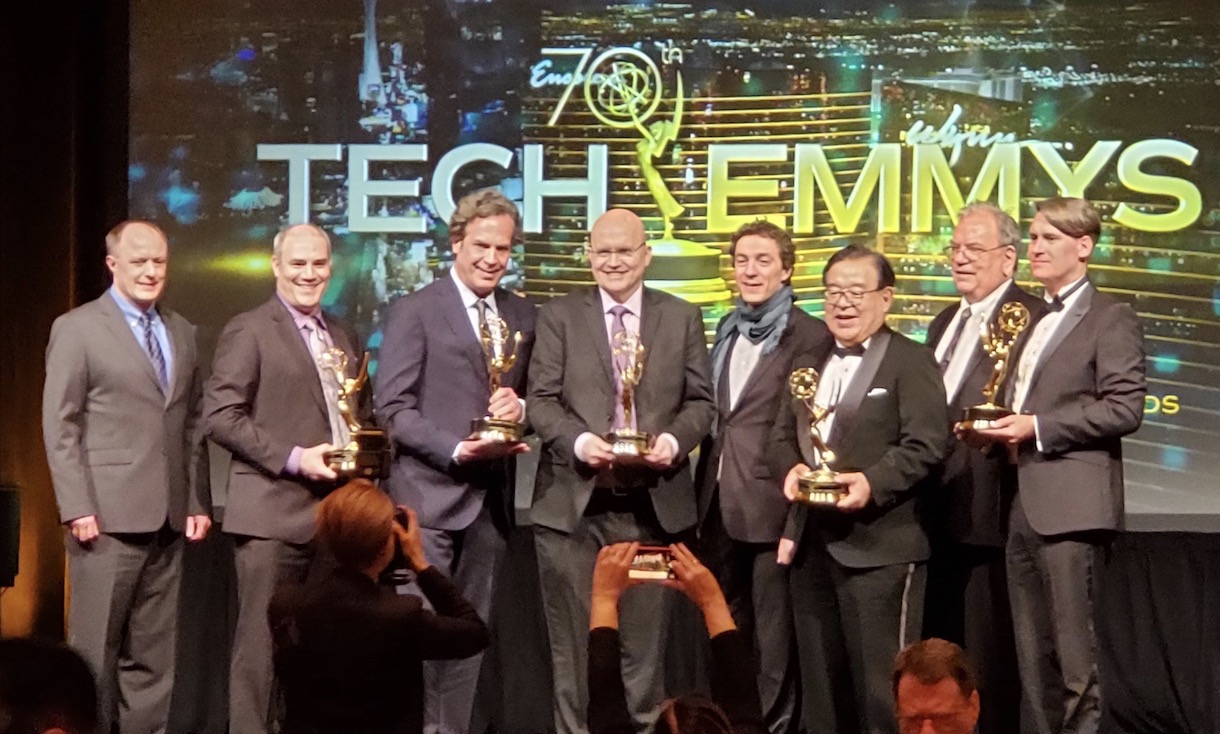Media & Entertainment Activity
The Open Web Platform has transformed media consumption
 The Open Web Platform has been the driver of the transformation of the media industry. The
The Open Web Platform has been the driver of the transformation of the media industry. The <audio> and <video> elements in HTML, Media Source Extensions (MSE), Encrypted Media Extensions (EME) and the Timed Text Markup Language (TTML) form the backbone of media streaming experiences on the Web. Together, these Emmy® award winning technologies have revolutionized media consumption worldwide.
The Media & Entertainment Interest Group was established to help affected parties build on these foundations and maintain a competitive advantage. Members of the Interest Group refine the requirements that get adopted by Working Groups when they develop tomorrow's media standards.
The Media Working Group is at the core of media standardization at W3C. On top of maintaining media foundations, the group develops APIs to improve client-side media processing and playback features on the Web, such as Media Capabilities, Picture-in-picture or Media Session.
The Media & Entertainment Industry is shaping media on the Web at W3C
Through the Media & Entertainment Interest Group, the Media Working Group and a few other media related groups such as the Audio Working Group, the Second Screen Working Group, or the Timed Text Working Group, W3C has brought stakeholders together to help set the direction in which technological progress is made, reinforce core media technologies on the Web, create an interoperable ecosystem and build the future of media experiences.
Now is the time you can influence how media technologies on the Web evolve
Contact W3C to learn more about the benefits of W3C Membership, and join W3C Members that shape the way media is created, controlled and consumed on the Web:
- Broadcasters
- Cable, telecom, multiple service operators
- Chipset and device manufacturers
- Browser and software vendors
- Technology providers and research labs
- Content providers and movie studios
- … and others!
What's next for media and entertainment on the Web
-
Baseline for media applications
TVs are tested and certified as a matter of course. The Web platform evolves on a continuous basis. What is the baseline that device implementations need to support at a given point in time to be part of the Open Web? The Web Media API Community Group, initiated by the CTA WAVE project, develops such a baseline.
A recurring question about media technologies is whether Web browsers should provide native support for additional technologies or whether Web browsers should only provide low-level hooks that applications may leverage to implement media features. This includes support for in-band tracks (e.g. see ongoing incubation effort on DataCue API), support for caption rendering (e.g. native support for TTML) and synchronized overlays (e.g. bullet chatting), as well as support for media (de-)containerization (natively supported when MSE is used, up to applications in WebCodecs).
-
Audio support
Media elements in HTML5 and the Web Audio API enable audio processing and rendering on the Web. They need to be extended e.g. to address advanced spatialization scenarios, in particular with the advent of Head Mounted Displays used in Virtual Reality. The Audio Working Group discusses version 2.0 of the Web Audio API.
-
Improved Media distribution
Cross-browser support for the Media Source Extensions (MSE) standard means adaptive streaming over HTTP has become the main mechanism to distribute media content on the Web. The ongoing revision of MSE in the Media Working Group adds support for codec switching, e.g. to enable ad-insertion scenarios.
Other distribution mechanisms are being used or tested to lower distribution latency, improve scaling, and/or reduce streaming costs, including the use of WebRTC technologies (e.g. in peer-to-peer CDN) or push mechanisms to enable multicast distribution. The Media & Entertainment Interest Group discusses the scope of potential renewed standardization efforts in that area. In parallel, the WebTransport Working Group develops WebTransport, a low-latency transport API based on HTTP/3, and the Media Working Group standardizes WebCodecs to give applications better control over low-latency media encoding/decoding (as well as access to encoded/decoded frames to enable realtime media processing scenarios).
-
Second screen support
The Presentation API and the Remote Playback API expose second screens to web applications but interoperability between screens can only be achieved provided the industry agrees on a common set of protocols for second screen support. The Second Screen Working Group develops such an Open Screen Protocol.
-
HDR / Wide gamut color space support
As HDR devices become widespread, the Web platform needs to allow use of extended color spaces across the board (in CSS, Canvas and media playback) to take advantage of these capabilities. The Color on the Web Community Group was created to explore use cases and inform W3C specification work.
-
Immersive Web
With the advent of Head Mounted Displays and the popularity of 360° and 3D cameras, media scenarios naturally extend to immersive scenarios that give the user additional degrees of freedom. The Immersive Web Working Group develops specifications to expose XR devices to Web applications.
-
Games on the Web
WebAssembly exposes C++ power to Web applications. The GPU for the Web Working Group develops a modern interface between the Web platform and so-called video cards. The WebXR Device API exposes head-mounted displays. These technologies, combined with the Gamepad API, Pointer Lock, Web technologies behind Progressive Web Applications (PWA), and the ability to make payments on the Web without having to go through an application store are turning the Web into a competitive platform for immersive and highly performant games. The Games Community Group explores technical gaps for games on the Web.
